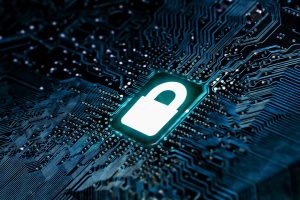Safeguarding Our Electronic Future: The Necessity of Quantum Security in Cyber Defense

First of all,
The introduction of security quantum computing offers both unparalleled benefits and formidable difficulties in the constantly changing field of cybersecurity. Utilizing the ideas of security quantum mechanics, quantum computers have the ability to completely change computing power, but they also represent a serious danger to established encryption techniques. Innovations in quantum security are increasingly needed as security quantum computing develops. This blog addresses the vulnerabilities that quantum computing poses to cybersecurity, looks at the technologies and techniques being developed to reduce these risks, and examines the critical role that quantum security plays in protecting our digital future.
Cybersecurity Risks Associated with Quantum Computing: New cybersecurity incidents, like the 2013 Yahoo data leak and the ensuing Aadhaar and Alibaba hacks, highlight the weaknesses in our digital infrastructure. These events demonstrate the havoc that may occur if our defenses are compromised, exposing private user information and exposing sensitive data. Although current encryption techniques are successful against traditional threats, the introduction of quantum computing creates a new level of vulnerability. As quantum computers function on essentially distinct principles from conventional electronic systems, they possess the potential to subvert commonly employed encryption techniques, making digital communications susceptible to interception and decryption.
Theory of Quantum Computing Decryption: Different rules apply to quantum computing decryption than to classical computing systems. Even if current quantum computers aren’t powerful enough to seriously undermine current encryption standards, it is nevertheless important to consider the possible threat that they could offer in the future to cybersecurity. The prospect of quantum computers defeating the encryption measures in place is becoming more and more likely as quantum computing technology develops. As a result, it is critical to foresee and resolve this possible threat to the safety of online commerce and communication.
Improving Cybersecurity with Quantum Technologies: Current cybersecurity measures are put to the test by the development of quantum computing. Due to their unmatched processing power, quantum computers could undermine popular encryption techniques, which would be extremely dangerous for data security. The creation of “quantum-safe” encryption methods is something that groups and institutions like the National Institute of Standards and Technology (NIST) are actively pushing for in order to counter this threat. These algorithms are meant to guarantee the resilience of cybersecurity infrastructure in the face of developing technology. They are made to withstand hypothetical attacks from quantum computers.
Post-Quantum Cryptography: Also referred to as quantum-resistant encryption, post-quantum cryptography seeks to create cryptographic protocols that can withstand attacks from quantum computing systems. This area of study focuses on protecting traditional computer systems from the sophisticated computational powers of quantum computing. Research is now focused on creating strong encryption algorithms that may successfully reduce the threats posed by quantum computing, with the goal of establishing standards for post-quantum encryption.
Lattice-Based Cryptography: In the realm of post-quantum cryptography, lattice-based cryptography, or LBC, is a hot topic for research. Because LBC depends on intricate lattice mathematics, decryption is extremely challenging—even for quantum computers. High security against quantum threats is offered by lattice-based cryptography algorithms, which take use of the complex structure of lattices. Lattice-based cryptographic techniques include CRYSTALS-Dilithium for digital signatures and CRYSTALS-KYBER for public key encryption.
Hash-Based Cryptography: This type of cryptography uses hash functions to encrypt digital messages. These operations transform plaintext data into distinct, fixed-length ciphertexts that are impervious to quantum computer decryption. XMSS and SPHINCS are two hash-based signature algorithms that provide better security and performance than conventional encryption techniques. A number of hash-based digital signature algorithms, such as CRYSTALS-Dilithium, FALCON, and SPHINCS+, have been standardized by NIST.

Error-correcting codes are used in code-based cryptography to create cryptographic systems that are immune to attacks from quantum computers. These systems are a major emphasis in the research of post-quantum cryptography because of their remarkable efficiency and security. The goal of code-based cryptography research is to develop quick, safe, and effective algorithms that will protect cryptographic systems from new attacks.
The significance of implementing quantum-safe infrastructure to guard against potential breaches in quantum computing is underscored by the concept of quantum-safe network design. Organizations can protect their data from the increased computing capabilities of quantum computers by putting in place encryption mechanisms that are resistant to quantum occurrences and establishments of secure communication channels. A number of crucial domains are covered by quantum-safe network design, such as digital signatures, online browsing, remote access, software, communication, and cryptocurrency.
Getting Ready for the Quantum Threat: As quantum computing develops further, businesses need to be proactive in anticipating and mitigating any risks that could arise from these machines. This entails putting strong encryption algorithms into place, embracing defense-in-depth tactics, and keeping up with the most recent advancements in cybersecurity and quantum technology. Organizations may reduce the risks associated with quantum computing and protect their digital assets from new threats by giving quantum risk planning top priority and making investments in encryption systems that are resistant to quantum attacks.

cybersecurity faces previously unheard-of opportunities and difficulties as a result of the development of quantum computing. The demand for quantum security solutions is growing as quantum computers continue to advance. Organizations may protect their digital future and get ready for the quantum danger by creating quantum-resistant encryption algorithms, putting quantum-safe network design concepts into practice, and implementing proactive cybersecurity measures. By working together, we can overcome the challenges posed by quantum computing and guarantee future generations have access to a safe and reliable cybersecurity system.
